Increasing Employee Productivity: 10 Simple Strategies

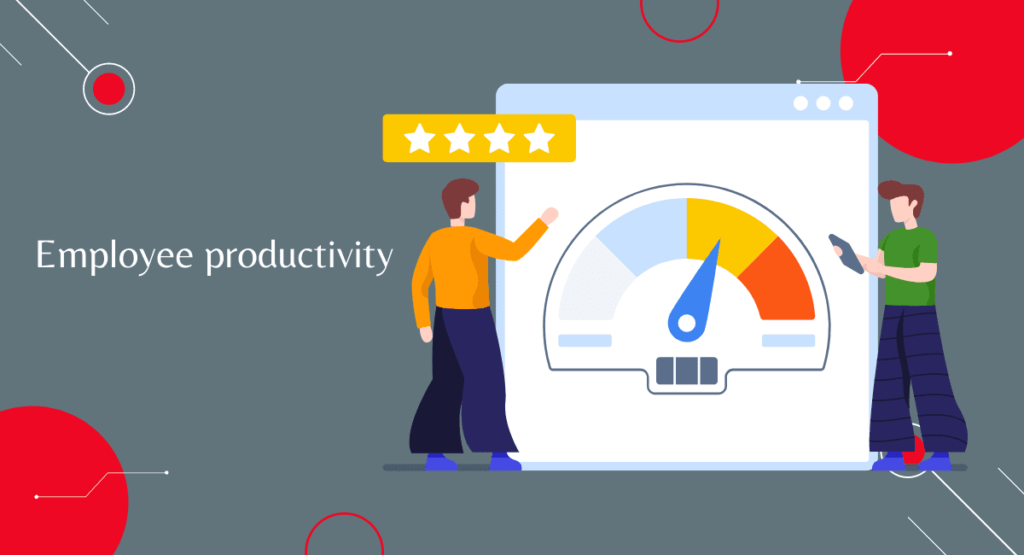
It’s no secret that increasing employee productivity can positively impact your business.
Did you know there are simple things you can do to increase employee productivity without spending a lot of time or money?
Check out these ten simple strategies and tips below to get started. Remember, the better your employees can focus and be productive, the more successful your business.
Let’s dive in!
Increasing employee productivity definition
Most businesses strive to have productive employees. After all, productive employees are critical to a company’s bottom line.
But what does it mean to be a productive employee? An effective employee is someone who gets their work done efficiently and with minimal disruption.
Productive employees are also often good at time management and multitasking.
They can prioritize their workload and stay organized, which helps them get their work done promptly.
Finally, productive employees are typically good communicators.
They can collaborate effectively with their colleagues and clearly express their ideas. All of these factors contribute to making an employee productive.
And when a company has productive employees, it can run more efficiently and be more successful.
The factors that influence increasing employee productivity

Several factors can influence employee productivity. The most obvious is the work environment itself.
A cluttered or cramped workspace can make it difficult for employees to focus, while a well-designed office can help to promote concentration and collaboration.
Other factors include job satisfaction, motivation, and team dynamics.
Additionally, outside factors such as family commitments or health issues can affect an employee’s productivity.
Measuring employee productivity can be a complex task, but understanding the factors that influence it can help to create a more productive workforce.
Many factors can affect workforce productivity, including:
Work environment
The work environment includes the physical environment (office layout and lighting) and social (such as interaction with co-workers and supervisors).
“We know that green office buildings improve health, wellbeing, and productivity thanks to groundbreaking academic research and data from leading businesses which are measuring the way buildings positively affect their staff. . .” Terri Wills, CEO of WorldGBC
After all, who would be able to focus on their work if their surroundings were chaotic and noisy?
A working environment that is both pleasant and functional can help to increase productivity by providing a space that is conducive to concentration and creativity.
In addition, such an environment can also help to foster a sense of community and collaboration among employees.
Ultimately, creating a working environment that supports productivity is essential for any organization that wants to succeed.
Job satisfaction
Job satisfaction is often determined by how well an employee’s skills match the job demands and by the level of autonomy and opportunity for growth that the job provides.
Research shows that happy employees are 13% more productive.
Employee morale
When employees are happy, they are more likely to be productive. On the other hand, when morale is low, it can lead to apathy and absenteeism.
Low productivity can be a snowball effect, as it can lead to even lower morale. In addition, unhappy employees are more likely to leave their jobs, which can create even more productivity issues.
As a result, it’s important for employers to do what they can to ensure that their employees are happy and engaged.
This may include providing challenging and interesting work, offering opportunities for growth and development, and creating a positive and supportive work environment.
Team dynamics
Businesses can improve productivity by creating positive team dynamics.
This can be accomplished by ensuring that employees are comfortable working together and providing clear instructions for their tasks.
In addition, businesses should offer regular feedback to help employees stay on task. Encouraging teamwork can also help to improve productivity levels.
Clear guidelines
One of the most important ways businesses can improve productivity is to provide clear guidelines.
Employees must be aware of their responsibilities and how their efforts contribute to the company’s larger objectives.
Setting achievable goals
When setting goals for employees, it is essential to make sure that they are achievable.
This means that the goal should be challenging but still within possibility.
By setting achievable goals, businesses can help employees stay focused and motivated.
Strategies to increase employee productivity for in-office
There are many things businesses can do to help increase employee productivity in the office.
Provide a clean and organized workspace
Companies ensure that all necessary supplies and tools are within reach and that there is enough desk or workspace for each employee.
Create a schedule or routine for employees to follow
One of the best ways to boost productivity in the workplace is to create a schedule or routine for employees to follow.
This can help to ensure that everyone is on the same page and knows what tasks need to be completed each day.
Additionally, it can help to eliminate distractions and keep employees focused on their work.
Of course, every workplace is different, so it’s important to tailor the schedule or routine to the specific needs of your business.
But if you’re looking for a way to boost productivity, creating a schedule or routine is a great place to start.
Breaktime
Encourage breaks and allow employees to take advantage of flexible work hours.
Provide education and training
By increasing employees’ knowledge and skills, employees can be more productive in their work. In addition, employers should offer development programs to help their employees grow professionally.
Research proving that Increasing 10% on education and training could boost productivity by 8.6%.
This can help improve employee morale and encourage them to stay with the company for a longer time.
By implementing these strategies, businesses can create an environment conducive to employee productivity. In turn, this can lead to a more successful and profitable business.
Strategies to increase employee productivity for remote workers
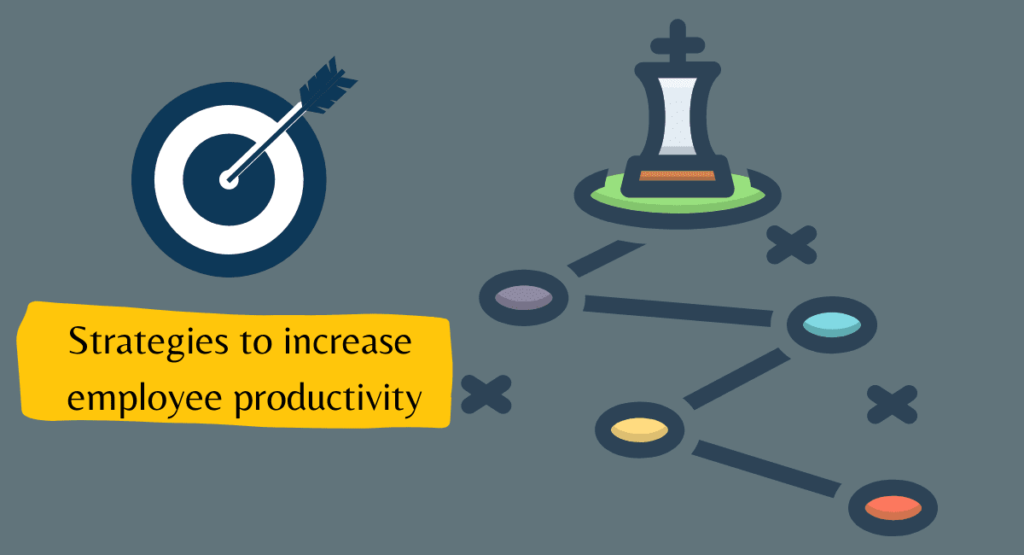
As more and more companies embrace remote work, it’s essential to consider how to best support employee productivity.
After all, the whole point of having employees is to get work done!
There are a few key strategies that can help to increase employee productivity for remote workers.
Focus on employee engagement
When employees feel connected to their work and invested in their company’s success, they’re more likely to be productive.
Provide adequate resources
Additionally, make sure to provide adequate resources and support for remote workers.
This includes everything from technical assistance to regular check-ins with managers.
Create collaboration culture
When everyone is working towards the same goal and knows what’s expected of them, they’re more likely to be productive.
There are a few different ways to increase employee productivity for remote workers.
Set a work schedule
This ensures that employees know when they are supposed to work, allowing them to prepare their day ahead of time.
Provide clear instructions on the task
All you have to do is provide clear instructions for the work. Ensure that your instructions are clear, concise, and easy to understand.
Use remote monitoring time as a reminder
There are a few different ways to do this, but setting a daily or weekly check-in time is the most effective.
This will help to ensure that workers are on track with their work and will also help to identify any areas where productivity has decreased.
Set regular communication with employees
One of the most important things you can do is to set up regular communication with your employees.
This doesn’t mean that you have to be glued to their side at all times, but it does mean checking in with them on a regular basis. This can help to ensure that work is getting done and that deadlines are being met. It can also help to identify any potential problems early on.
The key is to find what works best for you and your team.
Destructive factors on employee productivity for remote workers

According to a study, the top distraction for remote workers comes from social media platforms.
Other major disruptions when working at home is:
- Smartphone 53.7%
- Binge-watching 42.1%
- Kids 33.8%
- Gaming 30.4%
- News media 24.3%
- Pets 18.1%
- Partner 16%
- Online shopping 12.3%
There are many ways to handle distractions when working remotely.
For social media, one way to help reduce the temptation is to have specific times that you will check your account. This way, you are not constantly looking at notifications and can focus on your work.
If possible, try to limit the number of times workers spend on social media during work hours.
You can do this by setting up blocking software or regular check-ins to see how workers are spending their time.
If you get distracted by other things in your house, try to find a dedicated space dedicated solely to work. This can be anywhere from a separate room to just a corner of your kitchen table.
And if you have children, see if some relatives or friends can help watch them for a few hours so you can focus on work.
Measure the impact of increasing employee productivity

There are various methods to evaluate the impact of increased employee productivity.
Financial result
One way is to look at the company’s financial results before and after the increase in productivity.
A significant component of a company’s success is employee productivity.
When workers can complete tasks quickly and efficiently, it saves the company time and money.
As a result, many businesses invest in employee productivity initiatives, such as training programs and new technology.
The goal is to increase the number of work employees can complete in a given period.
Ultimately, these numbers demonstrate the importance of employee productivity in driving business success.
Efficiency
How much work gets done and whether efficiency has improved are two methods for assessing employee productivity.
This can be done by looking at how long it takes employees to complete tasks, the number of errors they make, and the amount of time they spend on breaks.
If employees can complete tasks more quickly and with fewer errors, they work more efficiently.
In addition, if employees are taking less time on breaks, it suggests that they are less likely to be disengaged from their work.
Ultimately, these measures can give you a good indication of whether increasing employee productivity has positively impacted your business.
Customer satisfaction
Finally, you can also look at customer satisfaction levels before and after increasing employee productivity.
Surveying users or taking data from customer service platforms is one approach to gathering information.
If you see an increase in customer satisfaction after improving employee productivity, it is a good indication that your business is on the right track.
In summary, there are several ways to measure the impact of increasing employee productivity. Financial results, efficiency, and customer satisfaction are important factors to consider.
By tracking these metrics, you can get a good sense of whether your business benefits from increased employee productivity.
Celebrate your successes!

When employees feel appreciated and acknowledged for their work, they are more likely to be productive.
Celebrating successes, both small and large, will show your team that you appreciate their efforts and encourage them to continue working hard.
Furthermore, a peer recognition program might help encourage employees to work together while improving productivity.
Appreciation increase productivity
There is an increase in productivity because it encourages people to complete their tasks effectively if rewarded.
It also increases employee satisfaction because they feel that the company cares about them and listens to their input, leading to increased loyalty of this company’s employees.
Profit-sharing increase productivity
There are a few reasons why profit sharing can lead to an increase in productivity.
When employees feel like they are a part of the company and have a vested interest in its success, they are more likely to work harder.
Additionally, employees will be more productive when they know that their effort will be recognized and rewarded.
If you’re looking for ways to improve employee productivity, consider implementing a profit-sharing plan.
You may be surprised at how much of a difference it can make.
Tips for Business Owner to increase employee productivity

If you’re a business owner, you can also do some things to help increase employee productivity.
Here are a few tips:
Encourage communication
Make sure that your employees feel comfortable communicating with you and that you’re open to hearing their suggestions. This will help them feel like they’re part of the team and their voices are being heard.
Set clear expectations
Your staff must understand what they must accomplish. This will help them stay on track and avoid feeling overwhelmed.
Give feedback
Make sure to give your employees positive and negative feedback. This will help them understand what they’re doing well and where they need to improve.
Rules and regulations to help increase productivity
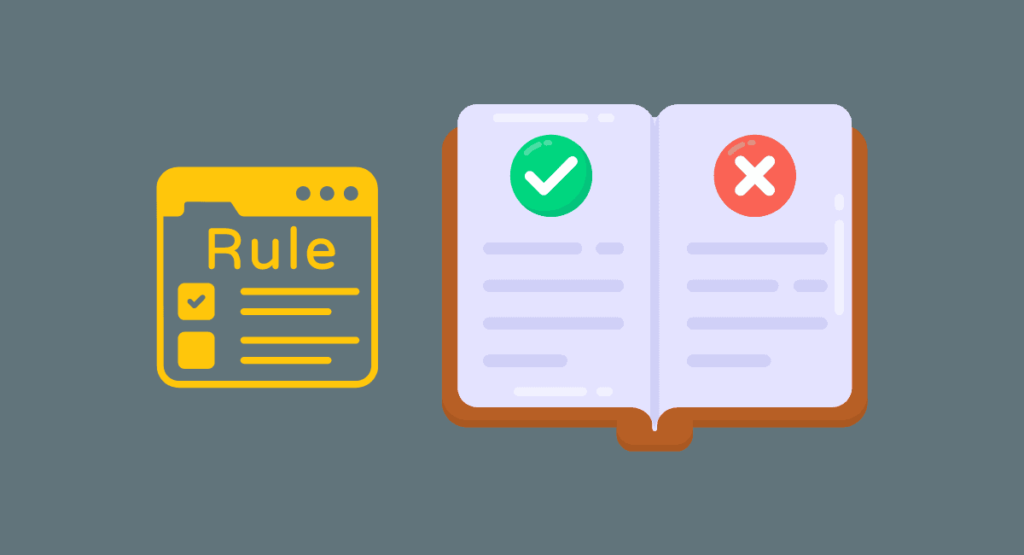
As the saying goes, time is money. And when it comes to business, that couldn’t be truer.
Your employees’ time on the clock should be as productive as possible.
But how do you make sure that’s the case? One way is to establish rules and regulations that help to increase productivity.
For example, you could set guidelines for how much time is on break or how often employees can check personal email.
By creating a more structured environment, you can encourage your employees to be more focused and efficient with their time.
Of course, it’s also important to strike a balance.
Too many rules and regulations can stifle creativity and lead to burnout. So find what works best for your team and stick to it.
The benefits of increasing your own personal or professional productivity
There are many benefits to increasing your productivity. When you’re productive, you feel accomplished and fulfilled, and you have more time for the things you enjoy.
You also accomplish more in less time, leading to a promotion or a raise.
Increased productivity can also help you achieve your goals faster and make more money.
Lastly, being productive can help reduce stress levels and improve your overall mental and physical health.
Facts about productivity: WFO and WFH
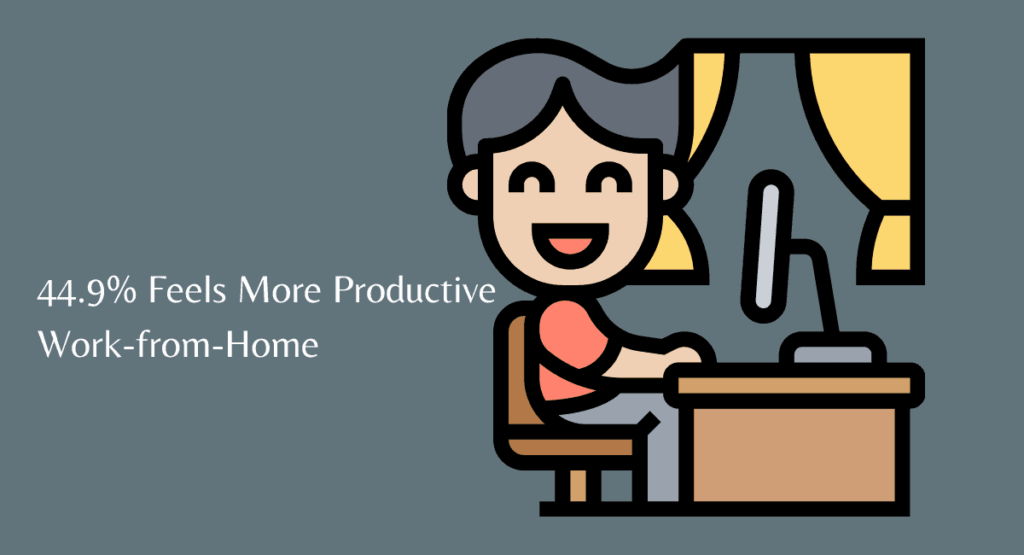
According to a survey about productivity during pandemic covid-19, Work-From-Office (WFO) and Work-From-Home (WFH), found that:
- 44.9% feels more productive at home
- 34.5% feels more productive at the office
- 20.6% no change in productivity
WFH could increase employee productivity
There are many reasons why working from home could improve employee productivity.
Being in a comfortable and familiar environment can help people be more productive.
Additionally, people can take breaks whenever they need them, which can help them stay focused for longer periods.
Lastly, people are able to work at their own pace, which can help them get more work done in less time.
If you’re looking for ways to improve employee productivity, consider implementing a work from home policy.
You may find that it has a positive impact on your business.
Create more time for family and fun
When you create more time for family and fun, you’re increasing your productivity in the long run.
You’ll be refreshed and recharged after taking a break, and you’ll be more motivated to get back to work.
Additionally, having a good work-life balance will make you happier and more productive in the long run.
Reduce Employee expenses

There are a few ways businesses can reduce employee expenses and improve employee productivity.
One way is to provide employees with the necessary tools and resources to do their jobs.
This includes providing employees with a computer, a phone, and an internet connection if they are working remotely.
It’s also important to create a work-friendly environment that is comfortable and conducive to productivity. This means having a space that is well-lit, quiet, and free of distractions.
Flexible time management
Another way to improve employee productivity is to give employees the freedom to work when and how they want.
This means allowing employees to set their own hours and work from home. It also means giving employees the freedom to take breaks when needed and not micromanaging their every move.
Employee development
Businesses can improve employee productivity by investing in employee development.
This means providing employees with training and development opportunities so they can learn new skills and grow in their careers.
It also means offering employees competitive salaries and benefits so they feel valued and motivated to do their best work.
By following these tips, businesses can increase employee productivity and reduce expenses.
Employees will be more productive and motivated to do their best work. As a result, businesses will see increased profits and growth. So it’s a win-win for everyone involved!
Improve company image
Increasing employee productivity is essential for any business.
It means that the employees are getting more done, but it can also increase company image and morale.
One of the main reasons company image increases following the increase in productivity is because it shows that the company is willing to invest in its employees.
This can lead to better morale and a more positive work environment. Additionally, it can make employees feel more valued and motivated to do their best work. As a result, the company will see a decrease in turnover and increased profits.
Tips for those who work remotely

Working from home can be a great way to get more work done, but getting distracted can also be easy.
Here are a few tips for increasing your productivity when working from home:
1. Set a schedule and stick to it. When you know what you’re supposed to be working on and when it’s easier to stay on track.
If you can, set your work schedule for the day before you start working.
That way, you can get right to work when you sit down at your desk instead of figuring out what you should be doing.
And if you find yourself getting distracted by things like social media or household chores, set some specific times for those activities instead of letting them eat into your work time.
Creating and following a schedule will help you make the most of your time to be more productive when working from home.
Invest in a planner or scheduling app to help you keep track of your tasks and deadlines.
If you don’t already have one, a daily planner can be a helpful way to keep track of your work schedule and deadlines.
There are also a number of scheduling apps that can be used to create and manage your schedule. Find one that works for you and start using it to increase your productivity.
By setting aside specific times for work and sticking to them, you can train your brain to focus on work.
And by scheduling specific times for activities like social media and household chores, you’ll be less likely to let them interfere with your work time.
Prepared time for the un-plan situation
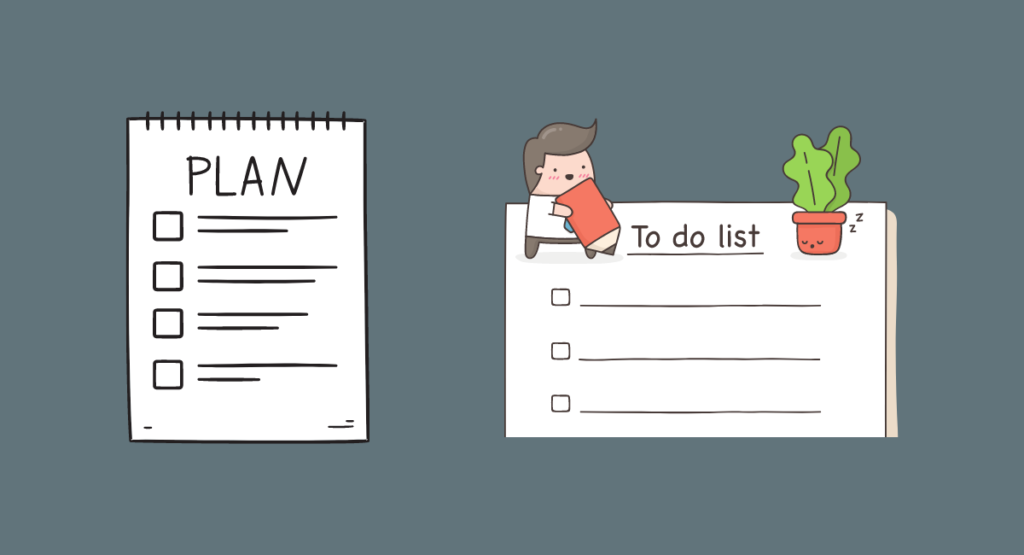
The other important point also has to do with time but differently.
This means that you need to schedule your day for the unplanned events and meetings that will inevitably pop up.
One way to do this is to schedule “buffer time” into your day.
This is a time that you intentionally leave open so that you can deal with the unexpected things that come up.
For example, if you know it takes you an hour to get your work done in the morning, then schedule two hours.
If something comes up, you can still get your work done without feeling rushed or stressed.
Another way to deal with the unplanned is to schedule time for it.
Set aside an hour each day (or whatever time frame works for you) dedicated to dealing with the unexpected.
During this time, you can return phone calls, answer emails, and take care of any other small tasks.
By setting aside this time, you can rest assured that you’ll still be able to get your work done even if something unexpected comes up.
These approaches will help you increase your productivity by ensuring that you have time to deal with the unplanned events that inevitably come up during the day.
By being prepared for the unplanned, you can avoid feeling rushed or stressed and focus on getting your work done.
Conclusion
Businesses can increase employee productivity by creating an environment that is conducive to working.
This includes providing the right tools and equipment, having a designated workspace, and allowing for breaks.
Employees who are allowed to take short breaks throughout the day are more productive than those who aren’t.
Additionally, businesses should consider hiring remote workers.
Remote workers often have fewer distractions and can be more productive because they don’t have to commute.


